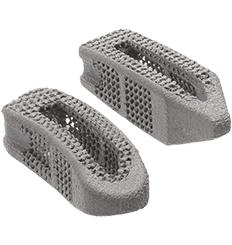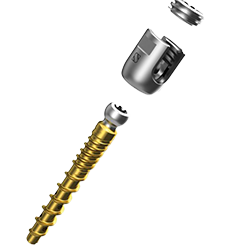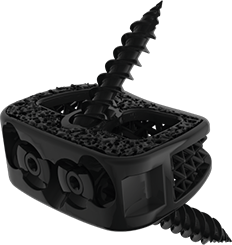Innovative Implant SolutionsWe use high-quality implants designed for durability, stability, and patient safety:
At ONZ, we are proud to offer four advanced implant systems for posterior spine stabilization and fusion:
NeoForza™ & ForzaXP™, Diplomat (Signus), Romeo®2 25D and Scarlet® AL-T
Each of these systems is designed to restore spinal stability, relieve pain, and support long-term recovery — tailored to the unique anatomical and clinical needs of every patient. Our approach is clear: the best implant is the one that fits the patient, not the other way around. That’s why we remain fully independent from implant manufacturers and assess each case individually to recommend the most effective solution.
NeoForza™ & ForzaXP™ (Orthofix)
Strength with Smart Design
Advanced interbody cages designed to restore spinal stability and promote long-term fusion success.
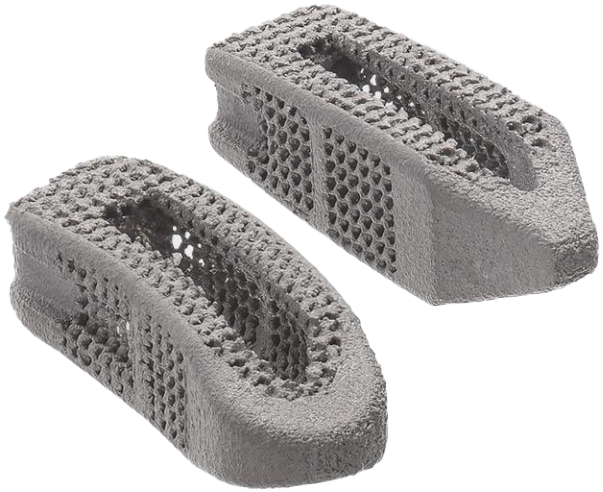
Key Features of the
NeoForza™ & ForzaXP™
System
3D-Printed Titanium
Porous structure encourages natural bone ingrowth.
High Biocompatibility
Supports solid fusion with minimal biological risk.
Anatomical Fit
Multiple shapes and angles for precise alignment.
Surgical Visibility
Open structure allows easy placement and monitoring.
How the NeoForza™ & ForzaXP™ System
Supports Fusion
The cages are inserted between vertebrae to restore disc height and stabilize movement. Their porous titanium surface promotes bone growth through and around the implant, helping achieve solid fusion and structural integrity.
Who Can Benefit
from the NeoForza™ & ForzaXP™ System
Degenerative Disc Disease
Progressive disc wear causing pain, stiffness, and reduced mobility due to loss of disc height and stability.
Lumbar Spinal Instability
Unstable vertebral segments that lead to abnormal motion, often resulting in back pain or nerve compression.
Spondylolisthesis
Slippage of one vertebra over another, causing spinal misalignment and nerve irritation.
Why Choose
the NeoForza™ & ForzaXP™ System?
These implants combine modern engineering with proven fusion support — ideal for restoring spinal stability while preserving patient-specific anatomy.
Fusion Stability
in Action
NeoForza™ and ForzaXP™ provide lasting spinal support through a porous, 3D-printed design that promotes bone ingrowth and stable fusion. Their anatomical shape helps restore alignment and reduce stress on adjacent segments — supporting long-term recovery and mobility.
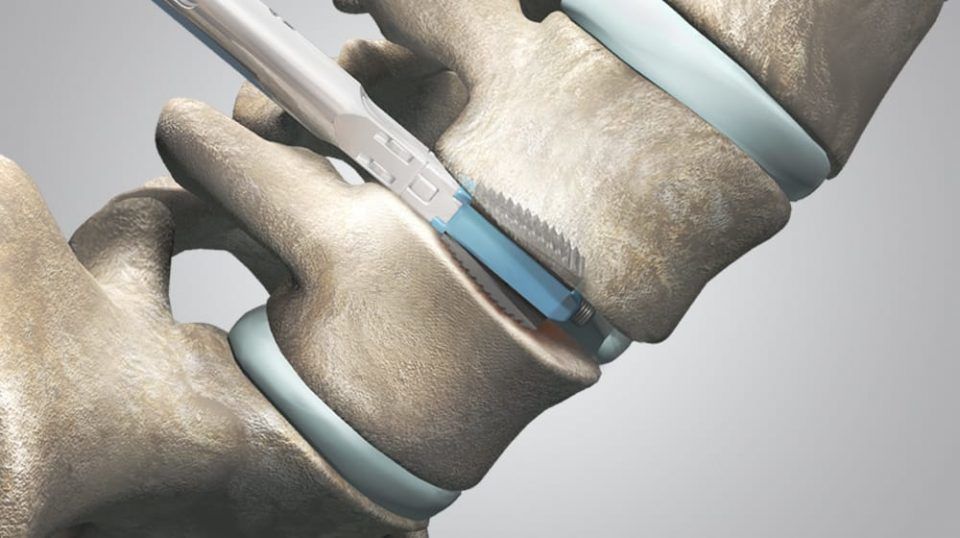
Diplomat™ (Signus)
Stability with Surgical Versatility
A posterior screw-rod system offering robust fixation and adaptable application for various lumbar spine conditions.
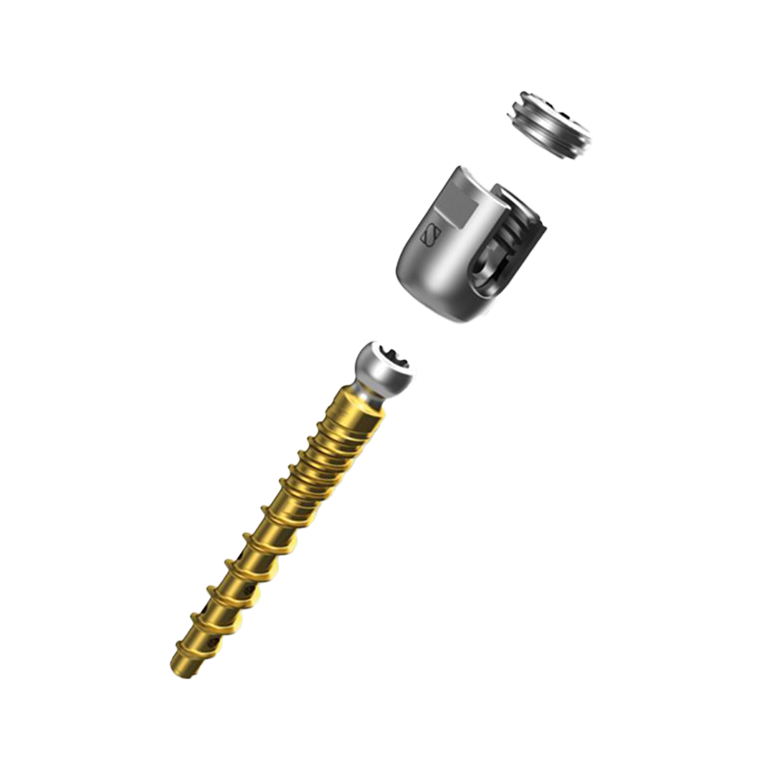
Key Features of the
Diplomat™ System
3D-Printed Titanium
Posterior stabilization using a reliable screw-rod construct.
Intraoperative Flexibility
Compatible with open and minimally invasive techniques.
Anatomically Adaptable
Offers multiple rod and screw configurations for different anatomies.
Proven Design
Trusted German engineering for consistent outcomes.
How the Diplomat™ System Stabilizes the Spine
Diplomat™ is used to stabilize the posterior aspect of the spine through pedicle screws and connecting rods. This construct immobilizes unstable segments, promotes alignment, and creates a supportive environment for fusion.
Who Can Benefit
from the Diplomat™ System?
Spondylolisthesis
Slippage of a vertebra causing pain, instability, and nerve compression.
Degenerative Spine Disease
Age-related wear causing vertebral collapse and joint degeneration.
Spinal Stenosis with Instability
Narrowing of the spinal canal combined with vertebral motion and segmental weakness.
Why Choose
the Diplomat™ System?
The Diplomat™ system combines mechanical reliability with intraoperative flexibility, making it ideal for a wide range of posterior stabilization procedures — all without being tied to a single surgical approach.
Romeo®2 25D
Stability with Surgical Versatility
A flexible posterior fixation system designed to support spinal alignment and long-term fusion across a wide range of lumbar pathologies.

Key Features of the
Romeo®2 25D System
Secure Pedicle Fixation
The system provides strong, reliable screw-rod stabilization for unstable lumbar segments.
Modular and Versatile
Compatible with both open and minimally invasive techniques, allowing tailored surgical strategies.
Efficient Instrumentation
Designed for intuitive handling and reduced surgical time, supporting smooth intraoperative workflows.
Durable Materials
High-performance components ensure long-term implant integrity and biomechanical safety.
How to Romeo®2 25D System Stabilizes the Spine
Romeo®2 25D implants are used to immobilize unstable vertebral segments via pedicle screws and rods. The system corrects deformities, restores natural alignment, and protects neural structures. Its design supports even force distribution and minimizes soft tissue disruption.
Who Can Benefit
from the Romeo®2 25D System
Degenerative Disc Disease
Stabilization and height restoration for worn, collapsed disc spaces.
Spondylolisthesis
Segmental correction and secure fixation to treat vertebral slippage.
Post-Decompression Stabilization
Fusion support following laminectomy or failed prior surgeries.
Why Choose
the Romeo®2 25D System?
SpineArt offers the perfect balance of precision, adaptability, and reliability. With its intuitive design and proven performance, it supports safe and efficient treatment — from straightforward fusions to complex revision cases.
Stability in Action
The Romeo®2 25D system helps restore stability and alignment through intelligent fixation, giving patients the foundation they need for long-term recovery.
SCARLET®AL-T
Anterior Stability with Smart Fixation
An innovative anterior lumbar cage designed for safe anchoring, optimal load transfer, and reliable spinal fusion.
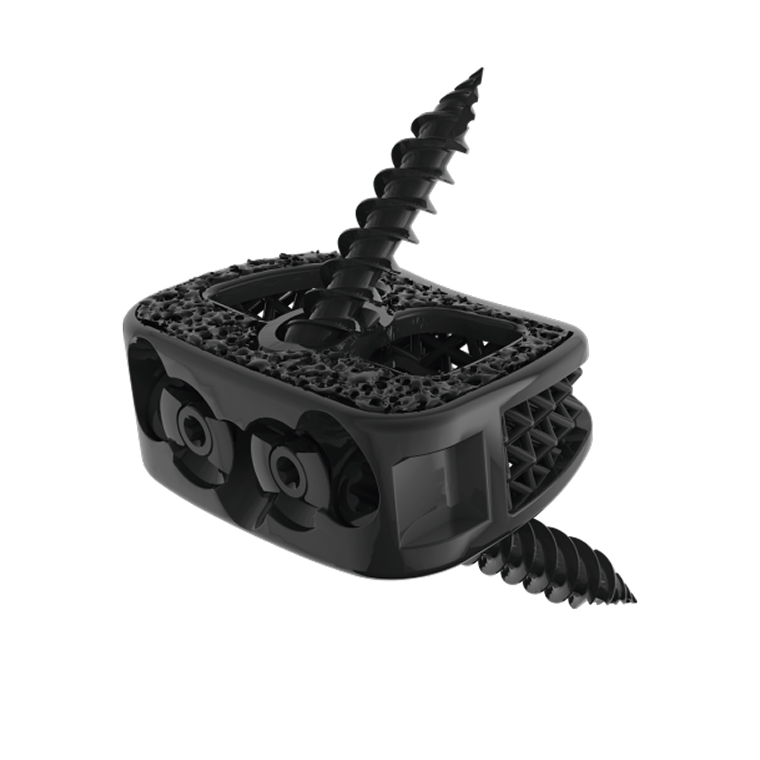
Key Features of the
SCARLET®AL-T System
Integrated Fixation Blades
Built-in anchoring system ensures secure placement and stability.
Low Profile Design
Minimizes disruption to surrounding tissue while optimizing implant positioning.
High Load Capacity
Engineered for strong support and balanced biomechanical stress distribution.
Fusion-Friendly Material
Surface structure promotes bone ingrowth and long-term integration.
How the SCARLET® AL-T System
Works
SCARLET® AL-T is implanted via an anterior (front-facing) approach. Once positioned between the vertebrae, the anchoring blades are deployed to secure the implant in place. This setup restores disc height, stabilizes the segment, and provides the ideal conditions for successful fusion.
Who Can Benefit
from the SCARLET®AL-T System
Degenerative Disc Collapse
Loss of disc height causing back pain and reduced spinal alignment.
Lumbar Instability
Unstable motion segments needing rigid anterior support.
Failed Fusion or Pseudarthrosis
Cases requiring revision with improved fixation and alignment.
Why Choose
the SCARLET® AL-T System?
SCARLET® AL-T offers a unique combination of secure anchoring, minimal anatomical disruption, and efficient fusion support. It’s a reliable option for surgeons seeking anterior access with modern fixation technology.
Anterior Fixaction in Action
With its smart locking mechanism and bone-friendly design, SCARLET® AL-T provides lasting stability where it matters most — supporting natural biomechanics and successful spinal fusion.
How Do the
Implants Compare?
| Feature | NeoForza™ & ForzaXP™ | Diplomat™ | Romeo®2 25D | SCARLET® AL-T |
|---|---|---|---|---|
| Core Technology | 3D-printed porous titanium for bone ingrowth | Posterior screw-rod construct with modular components | Modular screw-rod system for flexible stabilization | Integrated anterior cage with anchoring blade mechanism |
| Stability | Restores disc height and supports solid interbody fusion | Rigid segmental fixation to immobilize spinal segments | Provides strong, customizable fixation across segments | High axial load resistance with secure anterior anchoring |
| Motion Type | Immobilization with anatomical load distribution | Immobilization with realignment capabilities | Immobilization with flexible surgical access | Immobilization with anterior column support |
| Primary Use | Degenerative disc disease, disc collapse, instability | Spondylolisthesis, instability, revision fusion cases | Broad lumbar indications including instability and DDD | Revision cases, instability, anterior support |
| Clinical Legacy | Posterior (interbody) | Posterior (open or MIS) | Posterior (open or MIS) | Anterior (ALIF) |
Key Indications for All Four Implants
Degenerative Disc Disease
For stabilizing and restoring lumbar segments affected by wear and collapse.
Lumbar Instabilit
Ideal for treating spondylolisthesis, post-decompression instability, or failed prior surgeries.
Spinal Fusion Support
All systems are designed to create optimal biomechanical conditions for successful fusion.
Custom Solutions for Every Patient.
Contact us today to learn more about our comprehensive spinal solutions.
At German Spine Solutions / ONZ, we understand that every patient is unique. That’s why we offer a portfolio that enables fully personalized treatment strategies. The ESP®, Baguera® L, and Prodisc® L are all exceptional in their own right, and our team works closely with each patient to identify the best option based on their anatomy, clinical history, and treatment goals.With these three world-class systems, we ensure optimal outcomes and a path to restored mobility and pain relief.
Contact us Today